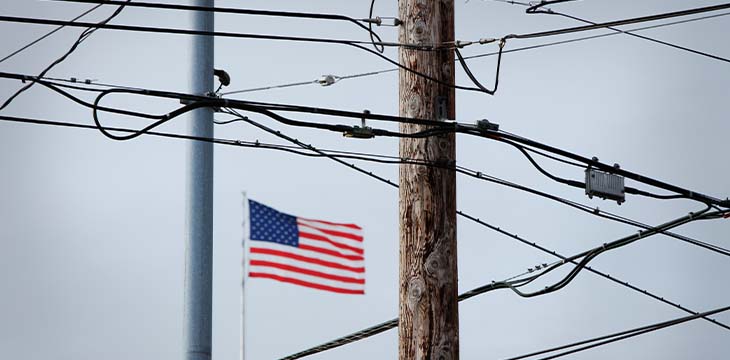|
Getting your Trinity Audio player ready...
|
Oak Ridge National Laboratory (ORNL), a Department of Energy (DOE) research institute, is exploring the use of distributed ledger technology (DLT), or blockchain technology, to make electricity grids impervious to cybersecurity attacks.
ORNL notes that DLT could hold the key to solving the existential threats plaguing America’s energy grid. The team argues that the decentralized nature of distributed ledgers creates multiple hash copies, triggering an alert if nodes have inconsistent data.
“Our system helps determine in near real-time whether a fault was triggered by a cyberattack or induced by natural events,” said Borges Hink, ORNL team leader. “This is the first implementation of blockchain enabling this kind of data validation between a substation, a control center, and metering infrastructure.”
Using DLT has the added benefit of preventing hackers from targeting devices through changes to their settings. Storing a digital fingerprint of the settings on the blockchain and monitoring it for unusual changes has the potential to thwart the activities of bad actors on the electricity grid.
ORNL notes that the experiments with distributed ledgers are coming at the appropriate time, given the spike in security vulnerabilities of the country’s electricity grid. A report by the U.S. Government Accountability Office (GOA) observed “several points of vulnerability” in the system, like an attacker compromising high-wattage networked consumer devices.
DLT has made a previous foray into energy grid cybersecurity, with Xage collaborating with the DOE on several projects. Furthermore, Blockchain for Optimized Security and Energy Management (BLOSEM), a coalition of over five energy labs, has also dabbled in DLT and energy grid security.
A rise in daring attacks
Malware attacks involving digital assets have been on an upward trajectory in 2022 and show little to no signs of slowing down. In May 2021, Colonial Pipeline suffered the largest publicly disclosed cyber attack in the U.S., costing the firm millions of dollars in ransom payments.
In response, law enforcement agencies told residents to brace themselves for an increase in ransomware attacks in the coming days, with the main targets being hospitals and institutions of learning.
North Korea has been identified as playing a lead role in the activities of ransomware gangs. Groups operating out of the country have obtained nearly $400 million worth of digital assets in the last 12 months, using mixers to launder the funds.
“From 2020 to 2021, the number of North Korean-linked hacks jumped from four to seven, and the value extracted from these hacks grew by 40%,” said a Chainalysis report on the matter.
Watch: BSV Global Blockchain Convention presentation, Sentinel Node partners with IBM to improve cybersecurity

 12-07-2025
12-07-2025 





